Abstract
The mechanism of stimulus-response coupling in human platelets was investigated with a new instrument that simultaneously monitors aggregation and secretion in the same sample of plateletrich plasma. When platelets were stimulated by high concentrations of ADP, secretion began only after aggregation was almost complete. With lower concentrations of ADP or with epinephrine, biphasic aggregation was observed, and secretion began simultaneously with, or slightly after, the second phase of aggregation. When platelets were stimulated with high concentrations of γ-thrombin or A23187, secretion and aggregation began essentially together. With very low concentrations of γ-thrombin or A23187, biphasic aggregation was observed with secretion paralleling the second phase. At every concentration of collagen, secretion and aggregation appeared to be parallel events. Under every condition where the beginning of secretion lagged behind aggregation, secretion was dependent upon aggregation and was inhibited by indomethacin; this is referred to as aggregation-mediated platelet activation. When secretion began at the same time as aggregation, it also occurred in the absence of aggregation and was not blocked by indomethacin; this is referred to as directly induced platelet activation. These observations are consistent with a simple model of platelet stimulus-response coupling that includes two mechanisms for activation; aggregation-mediated activation is inhibited by indomethacin, while direct activation does not depend upon aggregation and is not inhibited by indomethacin. Secretion and second wave aggregation appear to be parallel events, with little evidence for second wave aggregation being a consequence of secretion as usually described.
Full text
PDF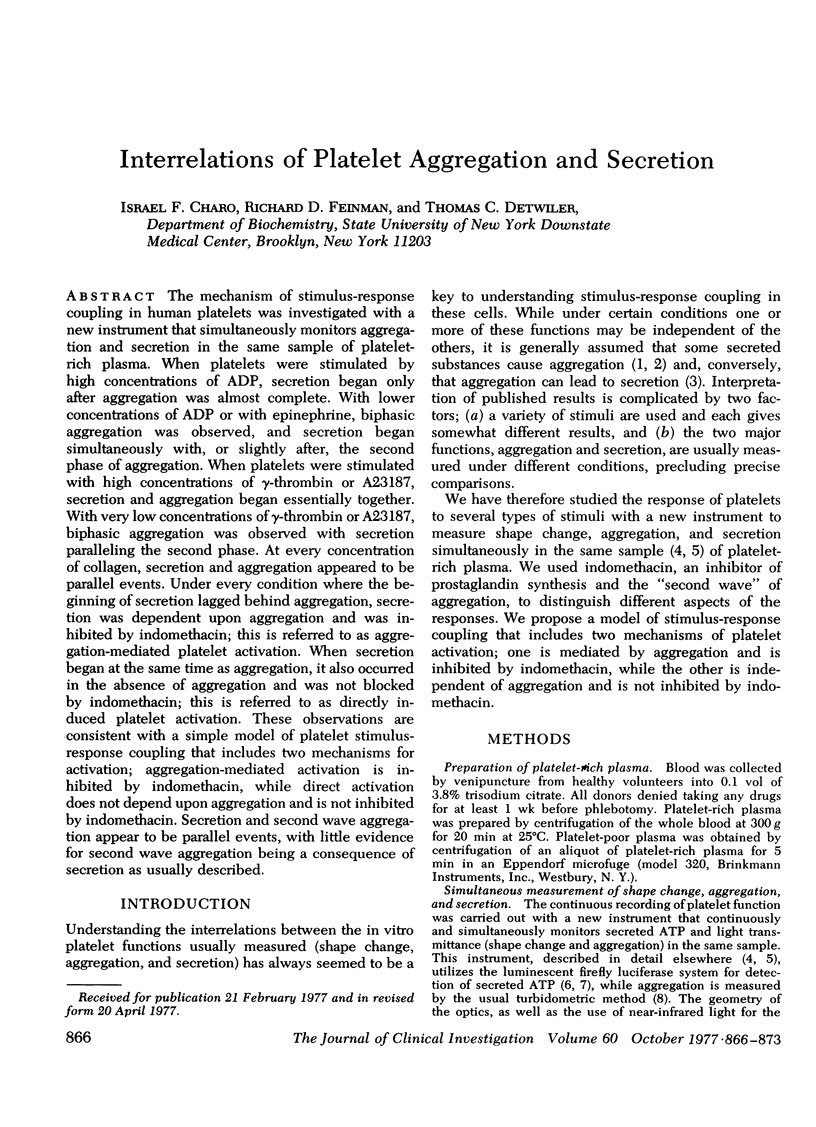
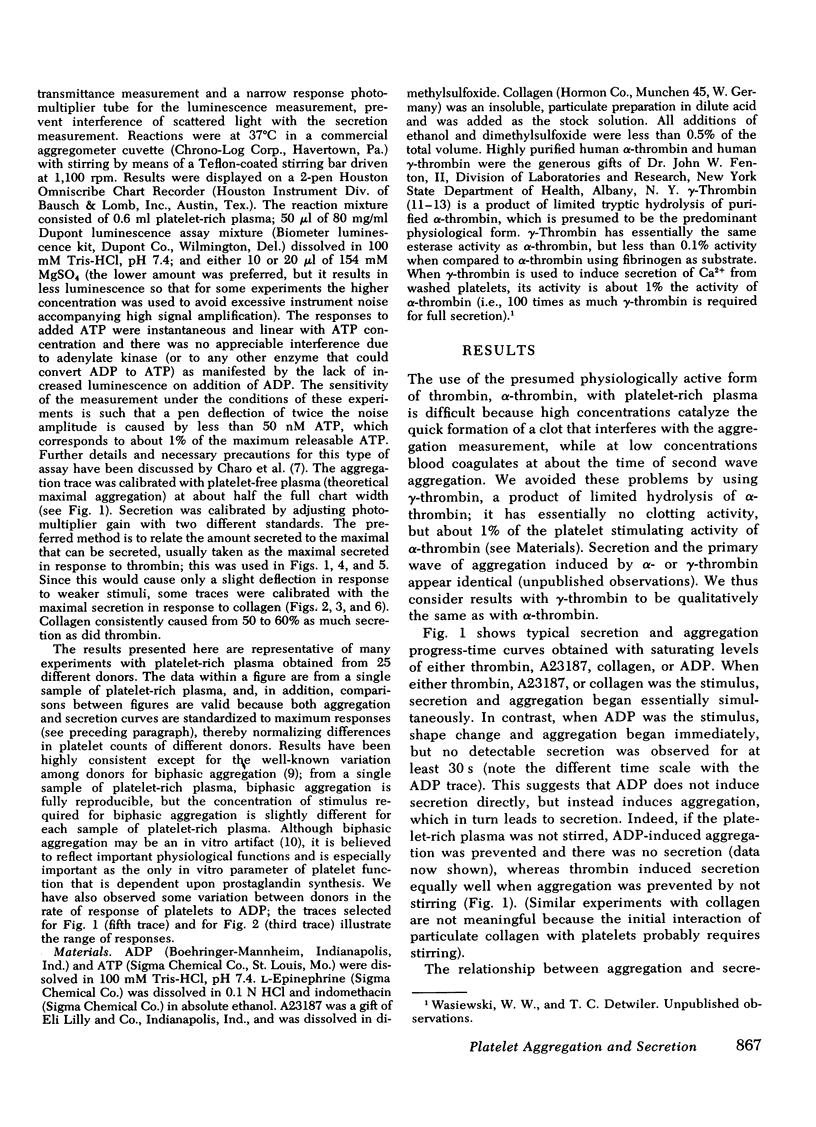
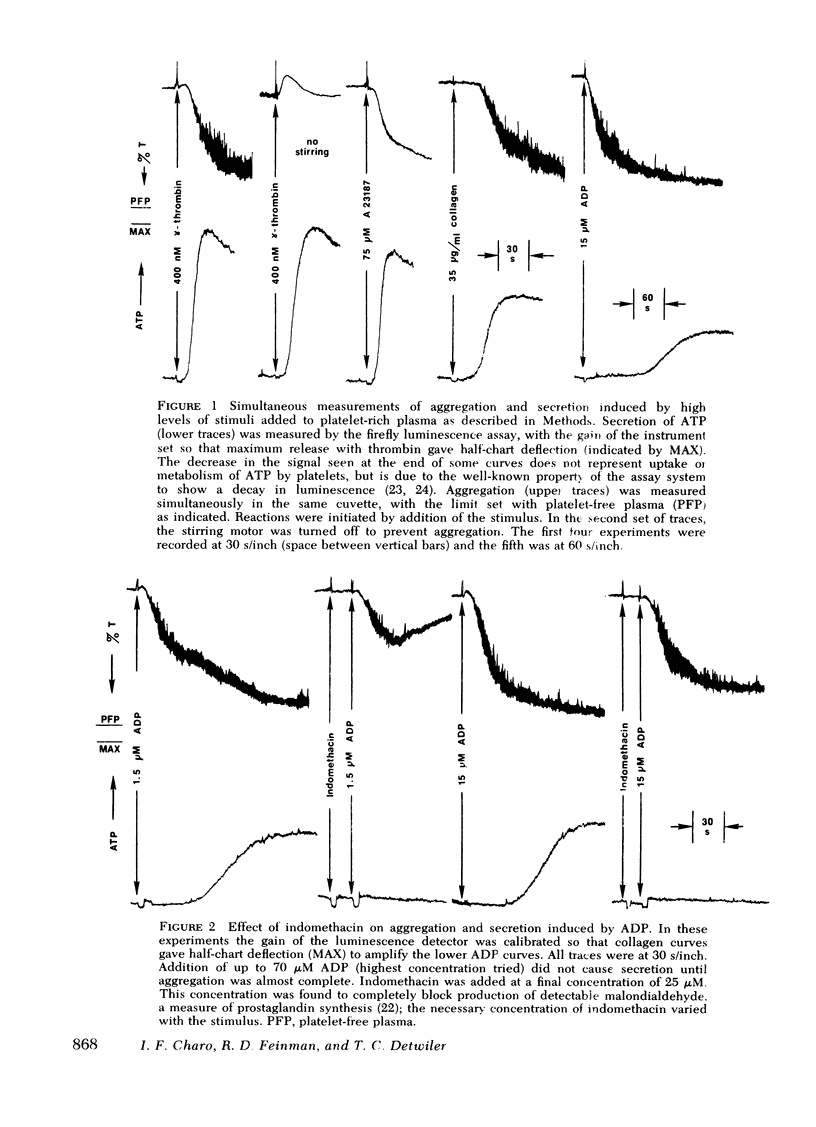
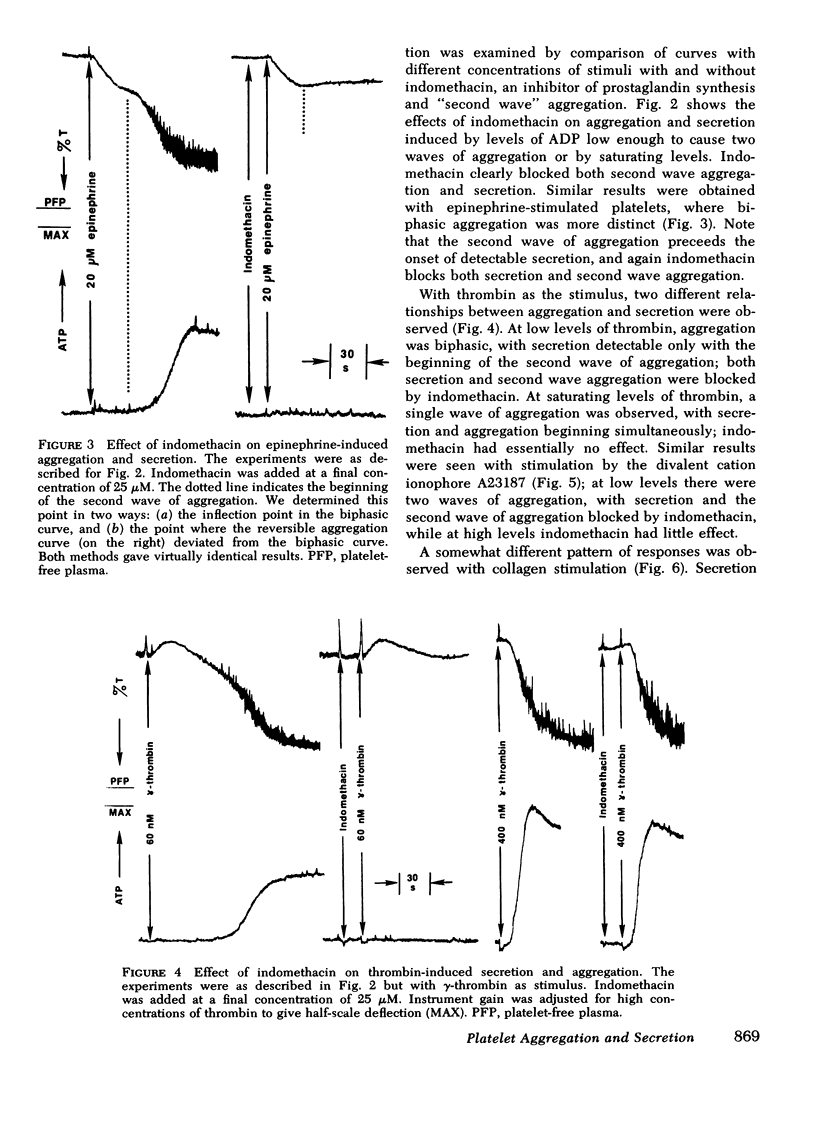
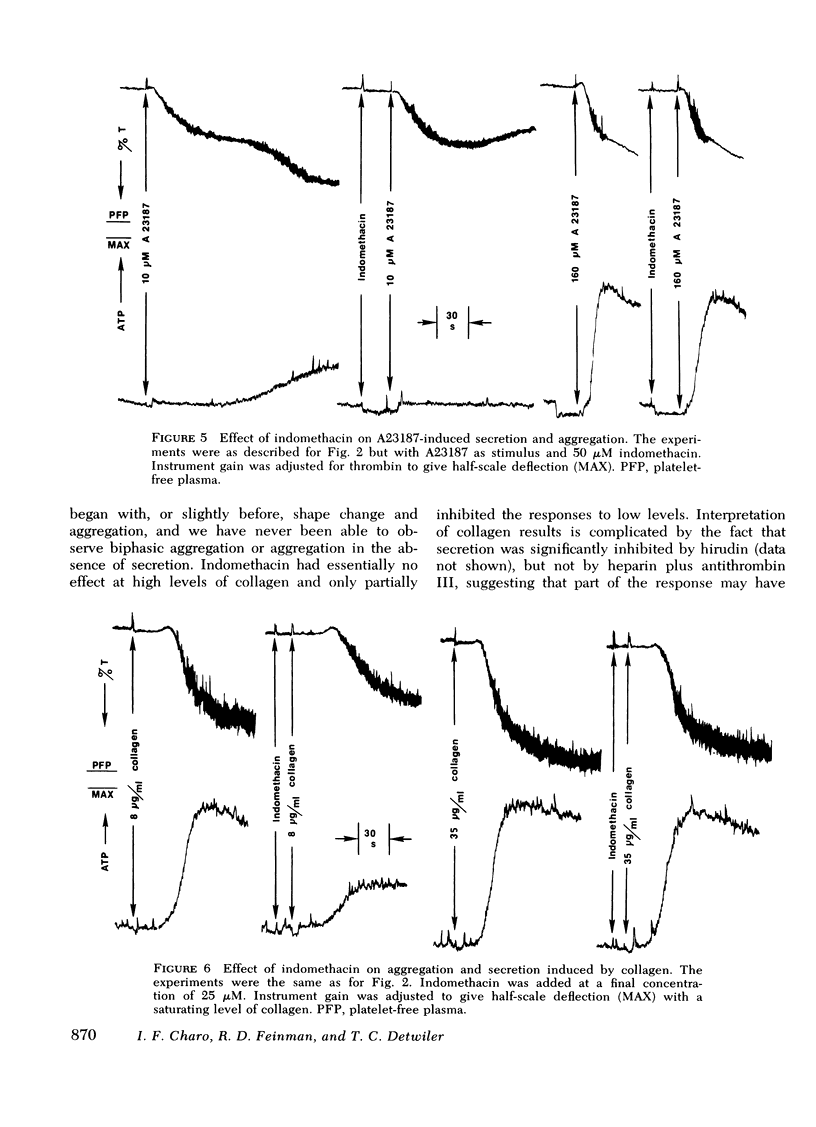
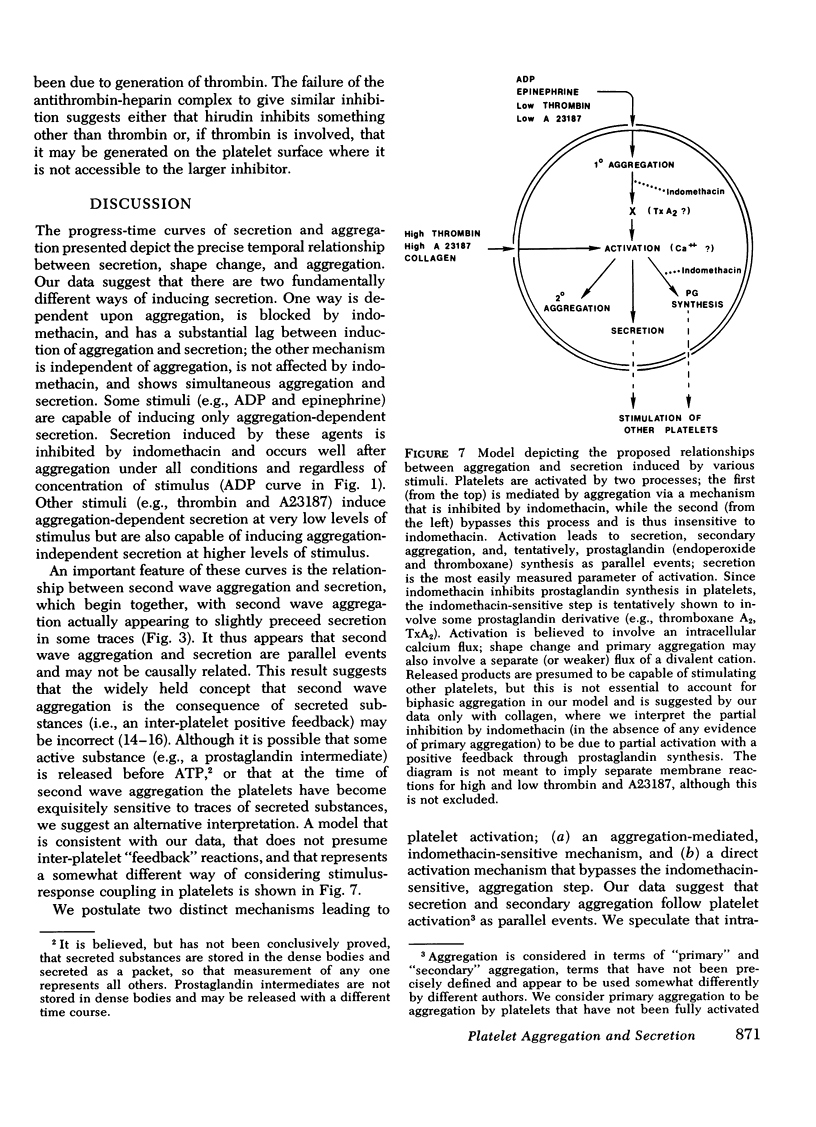
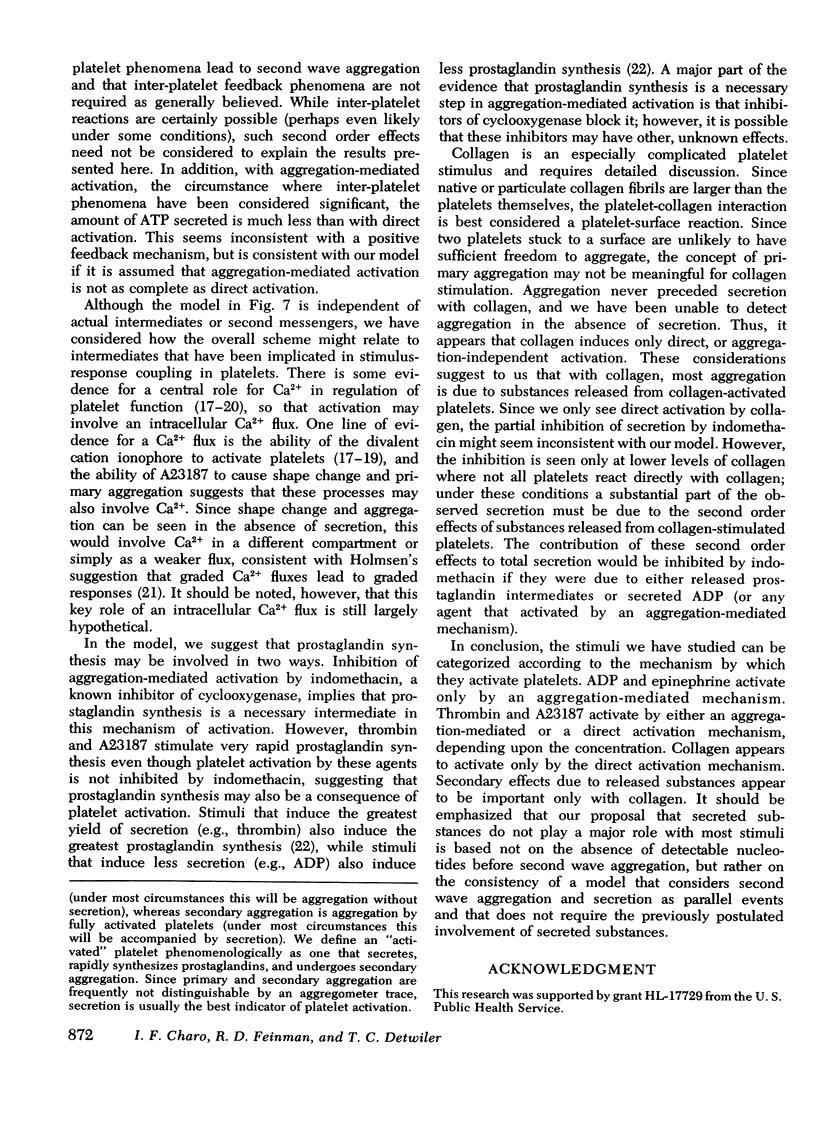
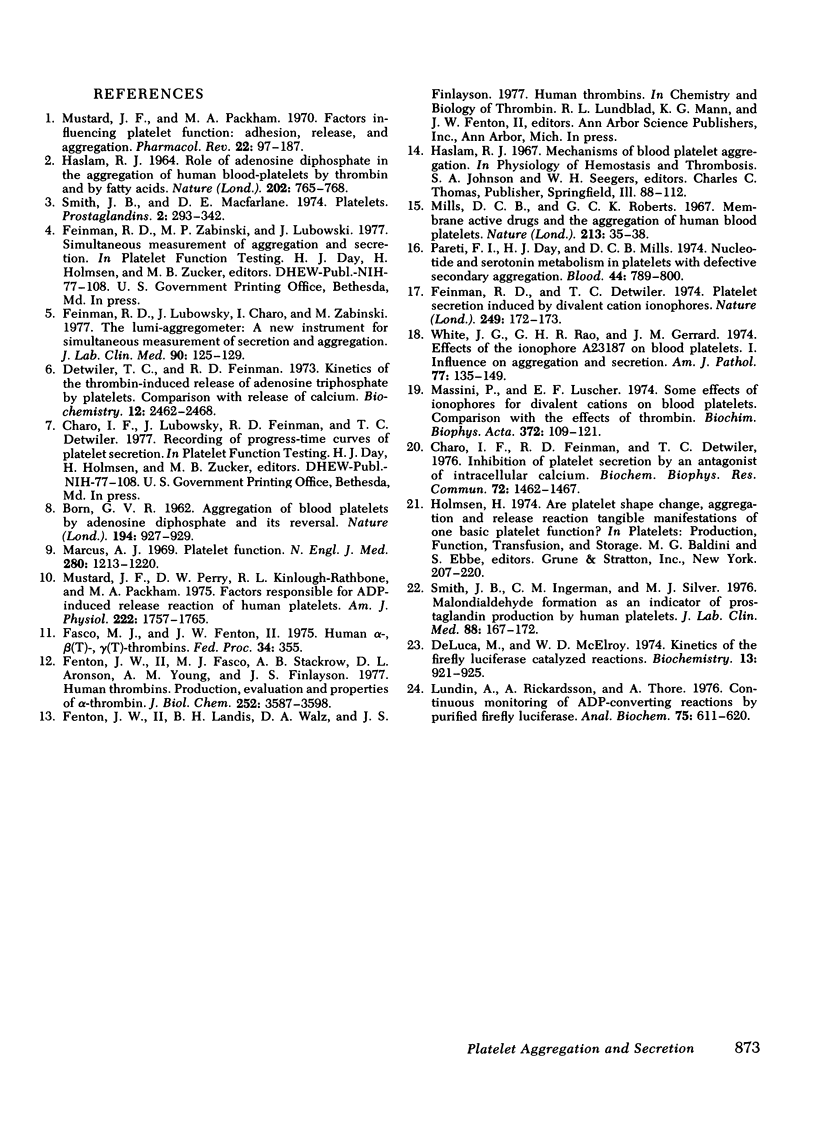
Selected References
These references are in PubMed. This may not be the complete list of references from this article.
- BORN G. V. Aggregation of blood platelets by adenosine diphosphate and its reversal. Nature. 1962 Jun 9;194:927–929. doi: 10.1038/194927b0. [DOI] [PubMed] [Google Scholar]
- Charo I. F., Feinman R. D., Detwiler T. C. Inhibition of platelet secretion by an antagonist of intracellular calcium. Biochem Biophys Res Commun. 1976 Oct 18;72(4):1462–1467. doi: 10.1016/s0006-291x(76)80178-7. [DOI] [PubMed] [Google Scholar]
- DeLuca M., McElroy W. D. Kinetics of the firefly luciferase catalyzed reactions. Biochemistry. 1974 Feb 26;13(5):921–925. doi: 10.1021/bi00702a015. [DOI] [PubMed] [Google Scholar]
- Detwiler T. C., Feinman R. D. Kinetics of the thrombin-induced release of adenosine triphosphate by platelets. Comparison with release of calcium. Biochemistry. 1973 Jun 19;12(13):2462–2468. doi: 10.1021/bi00737a015. [DOI] [PubMed] [Google Scholar]
- Feinman R. D., Detwiler T. C. Platelet secretion induced by divalent cation ionophores. Nature. 1974 May 10;249(453):172–173. doi: 10.1038/249172a0. [DOI] [PubMed] [Google Scholar]
- Feinman R. D., Lubowsky J., Charo I., Zabinski M. P. The lumi-aggregometer: a new instrument for simultaneous measurement of secretion and aggregation by platelets. J Lab Clin Med. 1977 Jul;90(1):125–129. [PubMed] [Google Scholar]
- Fenton J. W., 2nd, Fasco M. J., Stackrow A. B. Human thrombins. Production, evaluation, and properties of alpha-thrombin. J Biol Chem. 1977 Jun 10;252(11):3587–3598. [PubMed] [Google Scholar]
- HASLAM R. J. ROLE OF ADENOSINE DIPHOSPHATE IN THE AGGREGATION OF HUMAN BLOOD-PLATELETS BY THROMBIN AND BY FATTY ACIDS. Nature. 1964 May 23;202:765–768. doi: 10.1038/202765a0. [DOI] [PubMed] [Google Scholar]
- Lundin A., Richardsson A., Thore A. Continous monitoring of ATP-converting reactions by purified firefly luciferase. Anal Biochem. 1976 Oct;75(2):611–620. doi: 10.1016/0003-2697(76)90116-0. [DOI] [PubMed] [Google Scholar]
- Marcus A. J. Platelet function (first of three parts). N Engl J Med. 1969 May 29;280(22):1213–1220. doi: 10.1056/NEJM196905292802206. [DOI] [PubMed] [Google Scholar]
- Massini P., Lüscher E. F. Some effects of ionophores for divalent cations on blood platelets. Comparison with the effects of thrombin. Biochim Biophys Acta. 1974 Nov 4;372(1):109–121. doi: 10.1016/0304-4165(74)90077-4. [DOI] [PubMed] [Google Scholar]
- Mustard J. F., Packham M. A. Factors influencing platelet function: adhesion, release, and aggregation. Pharmacol Rev. 1970 Jun;22(2):97–187. [PubMed] [Google Scholar]
- Mustard J. F., Perry D. W., Kinlough-Rathbone R. L., Packham M. A. Factors responsible for ADP-induced release reaction of human platelets. Am J Physiol. 1975 Jun;228(6):1757–1765. doi: 10.1152/ajplegacy.1975.228.6.1757. [DOI] [PubMed] [Google Scholar]
- Pareti F. I., Day H. J., Mills D. C. Nucleotide and serotonin metabolism in platelets with defective secondary aggregation. Blood. 1974 Dec;44(6):789–800. [PubMed] [Google Scholar]
- Smith J. B., Ingerman C. M., Silver M. J. Malondialdehyde formation as an indicator of prostaglandin production by human platelets. J Lab Clin Med. 1976 Jul;88(1):167–172. [PubMed] [Google Scholar]
- White J. G., Rao G. H., Gerrard J. M. Effects of the lonophore A23187 on blood platelets I. Influence on aggregation and secretion. Am J Pathol. 1974 Nov;77(2):135–149. [PMC free article] [PubMed] [Google Scholar]


